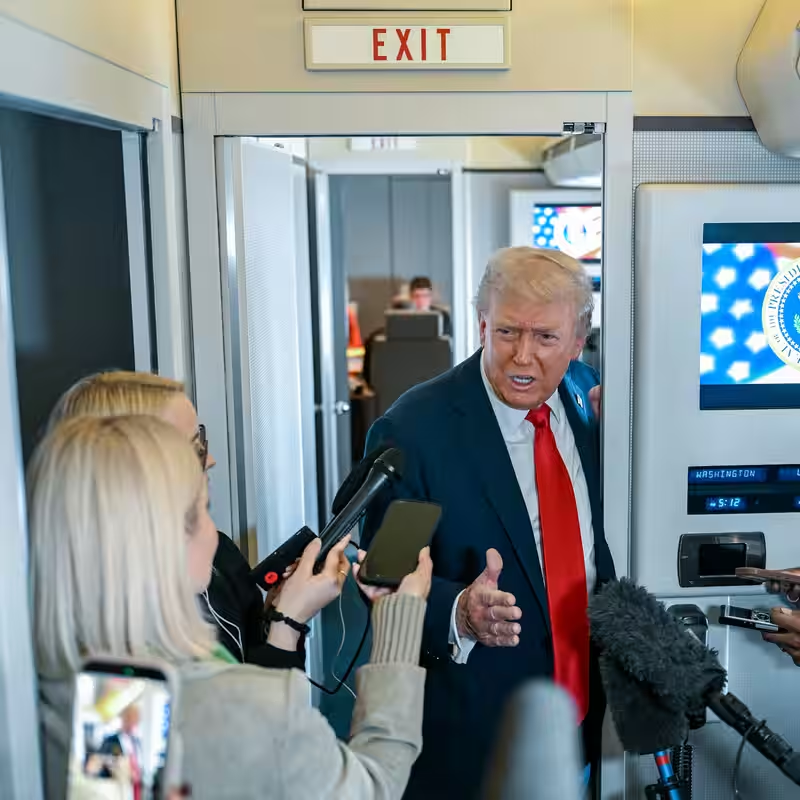Table of Contents
- The Tariff Tug-of-War: Two Messages in 48 Hours
- Why China’s Rare Earth Moves Triggered Trump
- Markets Reel from Mixed Signals
- Inside the White House: Competing Agendas
- What Comes Next Before the November Deadline?
- Sources
The Tariff Tug-of-War: Two Messages in 48 Hours
In a dizzying 48-hour span, President Donald Trump sent global markets—and U.S. allies—into whiplash over his stance on China. On Friday, October 11, 2025, he blasted Beijing’s new export controls on rare earth minerals as “sinister and hostile” and vowed to impose 100% tariffs on all Chinese goods. “The rest is History,” he posted.
By Sunday, the tone had flipped entirely. “Don’t worry about China, it will all be fine!” Trump reassured followers on social media. “We want to help China, not hurt it!!!”
This abrupt reversal has laid bare a deep internal conflict within the Trump administration: Is the U.S. preparing for economic war—or a grand trade deal?
Why China’s Rare Earth Moves Triggered Trump
The flashpoint was China’s new licensing rules for rare earth minerals—critical components in everything from fighter jets to smartphones and electric car motors. Under the new policy, any company using Chinese rare earths or processing technology must obtain government approval before exporting products—even if those products are made elsewhere.
“This isn’t just trade policy—it’s technological blackmail,” said Craig Singleton, senior China fellow at the Foundation for Defense of Democracies. “China is weaponizing its dominance in the supply chain.”
But analysts note the move came shortly after the U.S. expanded its “entity list,” sanctioning dozens of Chinese and Russian firms. Beijing likely saw that as a breach of a fragile summer truce.
Markets Reel from Mixed Signals
Investors didn’t know which Trump to believe.
- Friday: U.S. stocks plunged after Trump’s tariff threat.
- Sunday/Monday: Markets partially recovered as Trump softened his tone.
- Asia: Markets dropped Monday morning—still reacting to Friday’s bombshell.
“Businesses can’t plan when the rules change every tweet,” said economist Dr. Lena Cho of Georgetown University. “This isn’t strategy—it’s volatility masquerading as strength.”
Inside the White House: Competing Agendas
Experts say the whiplash reflects a real tug-of-war inside the administration:
| Faction | Goal | Key Players |
|---|---|---|
| Hardliners | Decouple from China, punish overreach | National Security Council, Trade Hawks |
| Deal-Makers | Secure pre-election trade agreement | Treasury Secretary Scott Bessent, Vice President JD Vance |
Treasury Secretary Bessent appeared on Fox Business Monday to calm nerves, insisting Trump and Xi Jinping could still reach a deal before the president’s self-imposed November 1 deadline for 100% tariffs.
Meanwhile, Vice President Vance emphasized Trump’s “friendship” with Xi—but warned Beijing not to “respond in an aggressive manner.”
What Comes Next Before the November Deadline?
Two major variables will shape the next chapter:
- The Supreme Court: Set to hear arguments on whether Trump can legally use emergency powers to impose sweeping tariffs. A loss could strip his leverage.
- American Farmers: China has halted soybean purchases, using U.S. agriculture as a bargaining chip. Rural voters are a key Trump base.
“The administration is caught between showing strength and delivering results,” said Josh Lipsky of the Atlantic Council. “Right now, they’re doing both—and neither.”
For now, the world watches and waits: Will Trump the dealmaker prevail—or Trump the tariff warrior?
Sources
The New York Times: Trump’s Two Minds on China Sow a Chaotic Few Days




